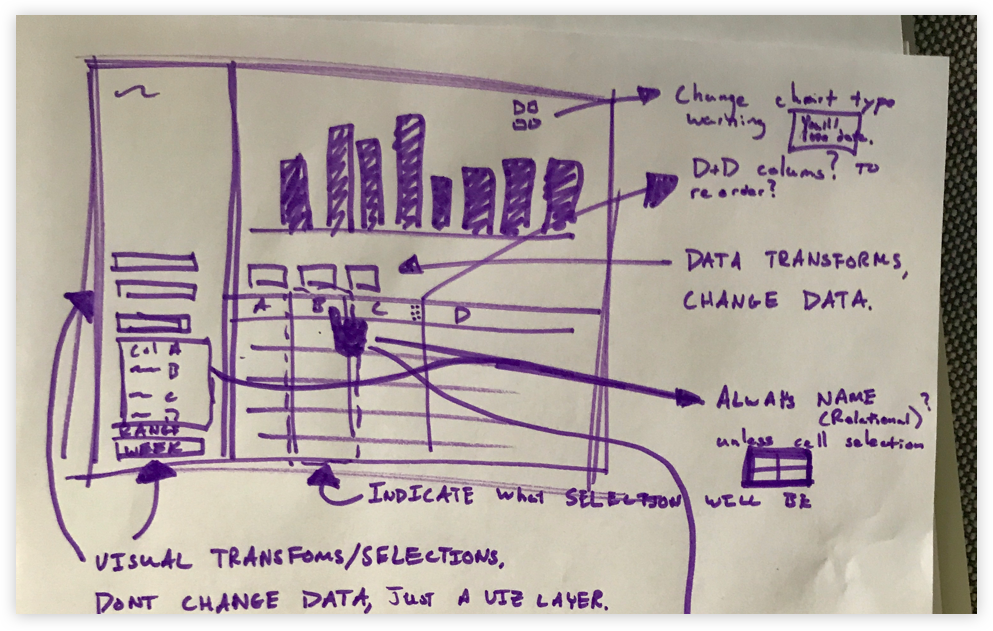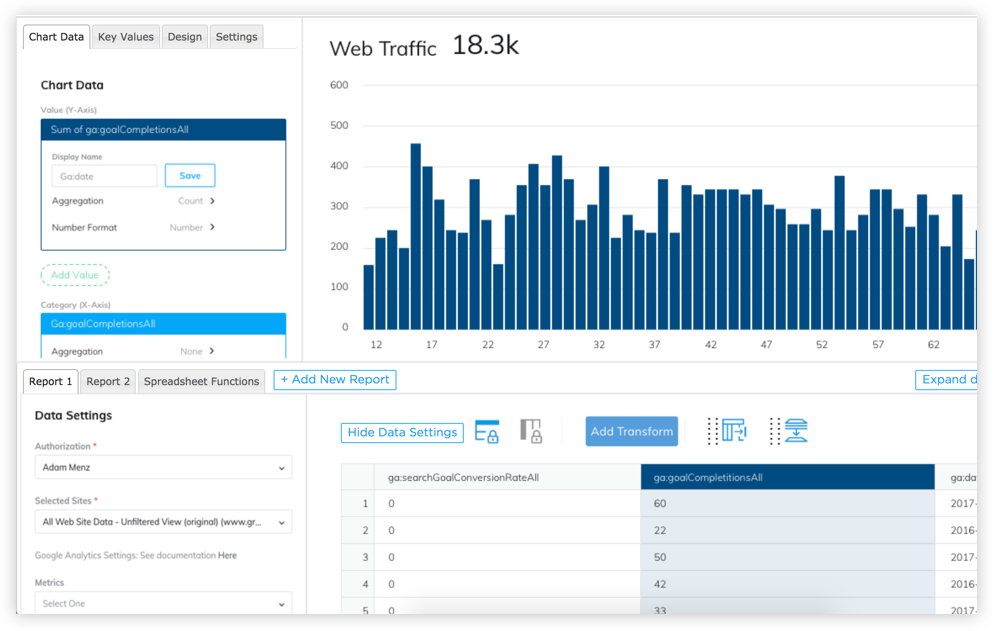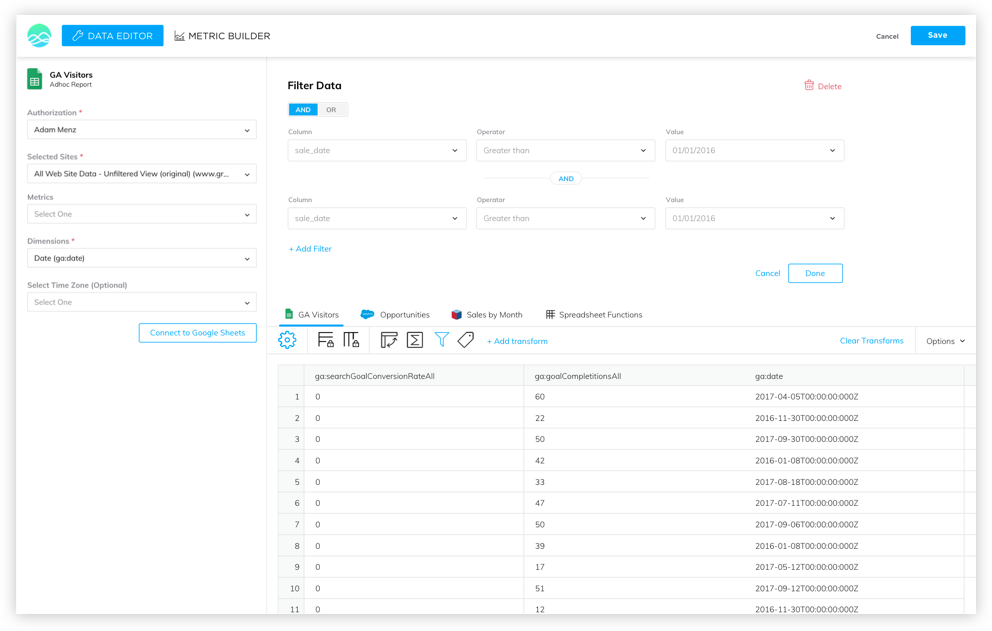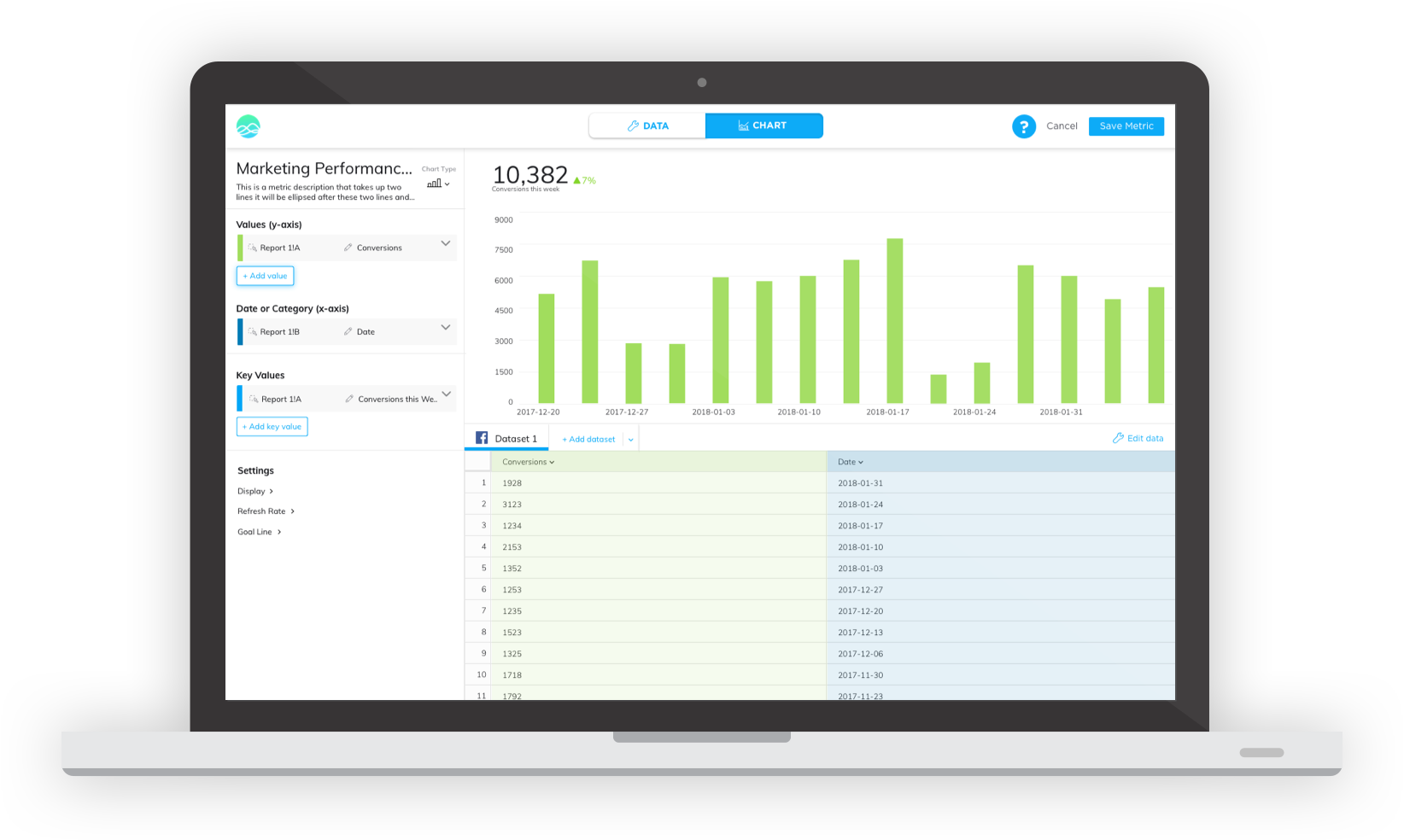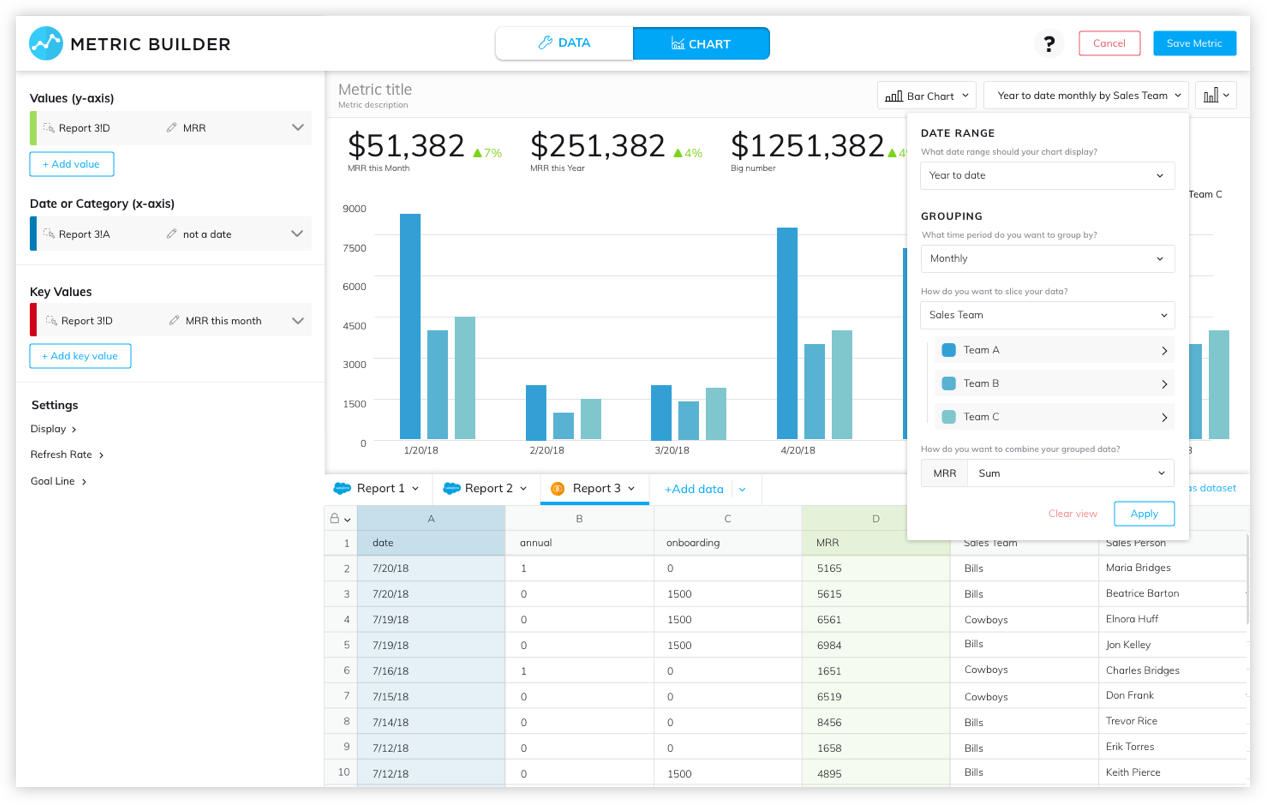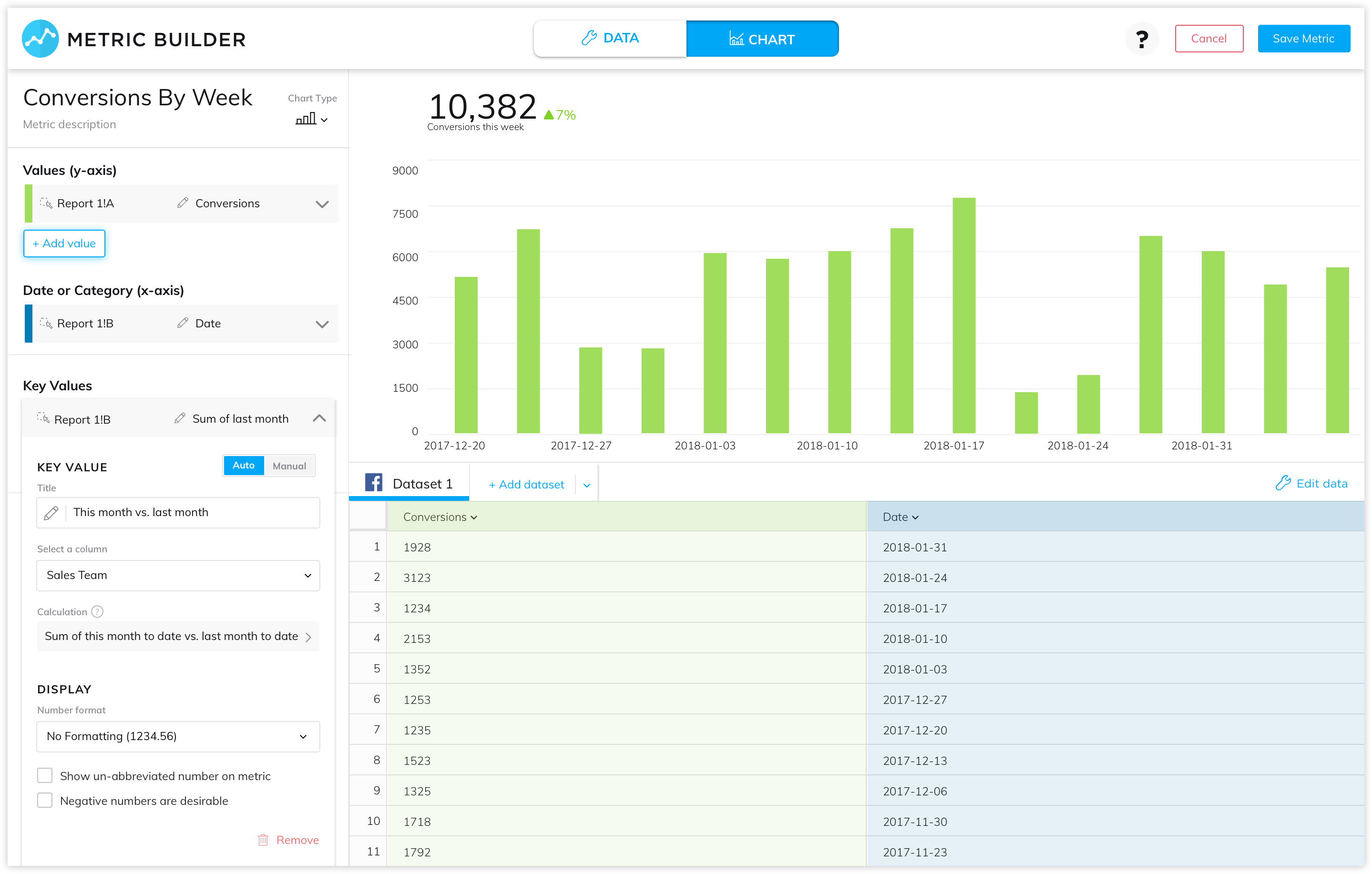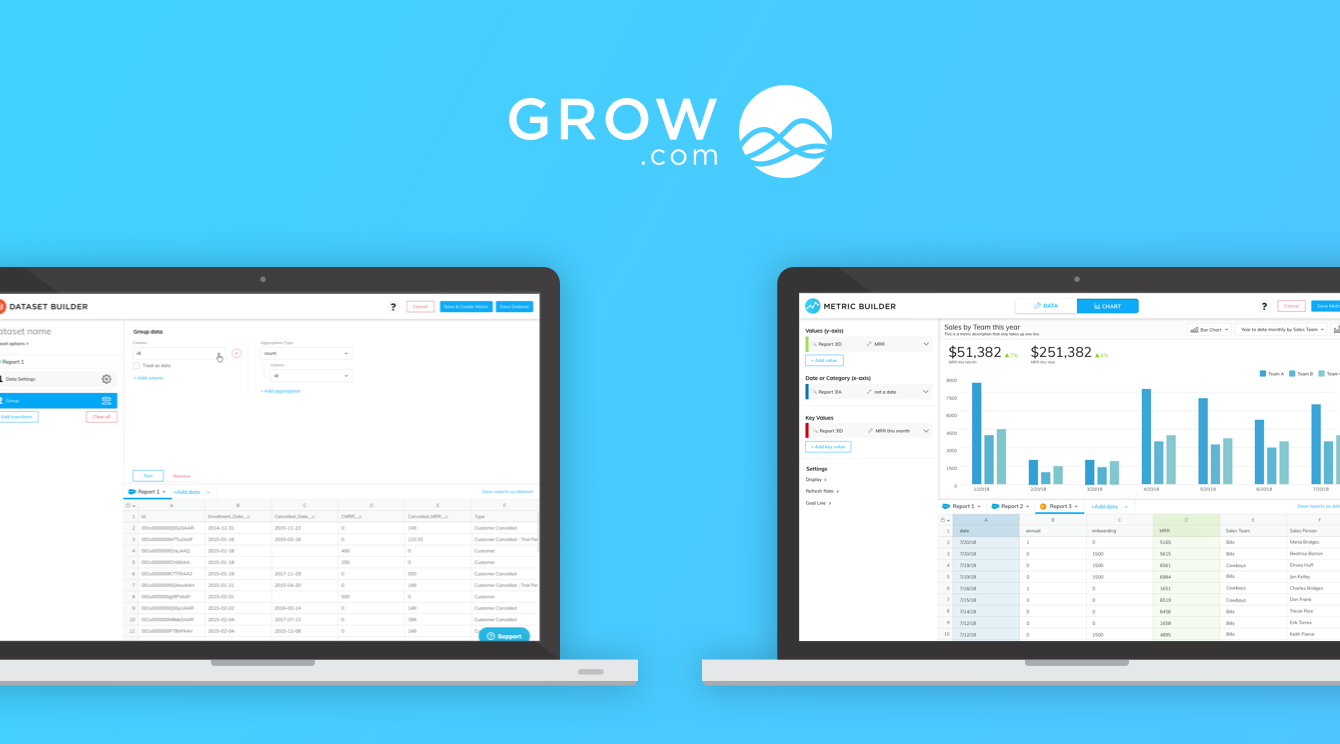

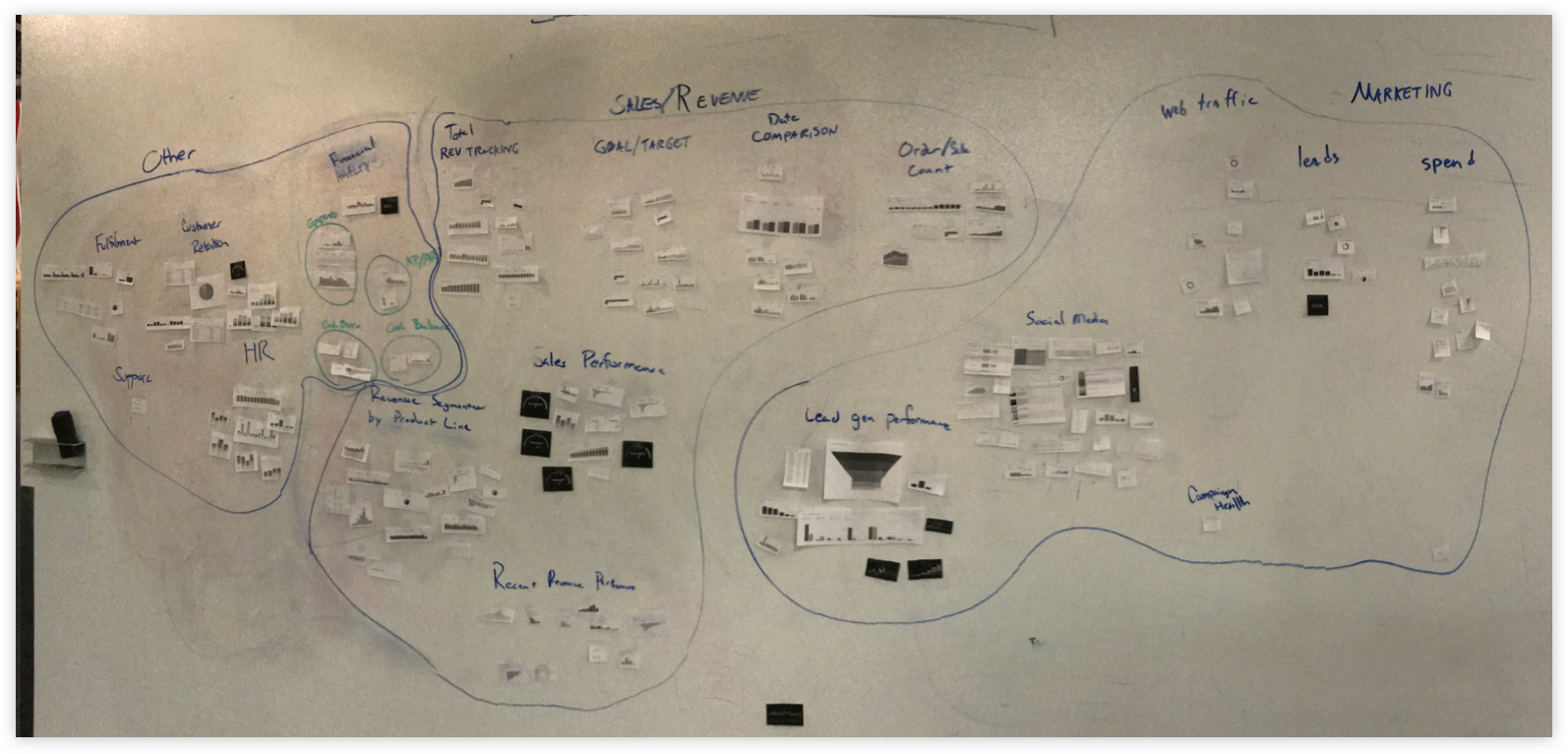
Next, we wanted to find out exactly what work was required to get Executive and Department Level Sales and Marketing Dashboards that provide Actionability, Accountability, and Visibility using Grow. What does the user experience, from their first sales call, to their first login, to building a complete suite of sales and marketing dashboards?
We printed, documented, and analyzed every step of this process. With the help of our customer success team and product experts, we were able to establish the Current Reality and identify pain points. The most painful parts of the Current Reality were focused around building metrics (sourcing, cleaning, preparing, transforming, and visualizing data). This made sense. Grow wasn't originally intended to build custom metrics - there wasn't a strong product vision, and features were added as requests came in. We eventually had a metric builder that got the job done, but using it was painful to use and required specialized knowledge.
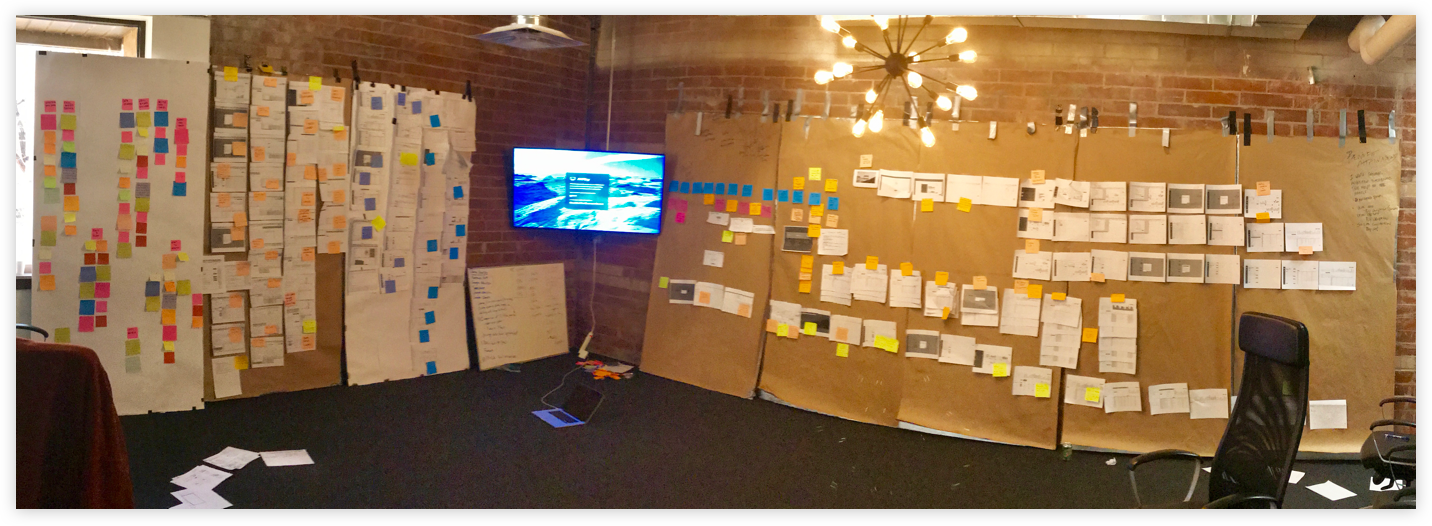
I believe what leads to creating a product is ensuring everyone is working to solve the same problems, is heard throughout the process, understands the vision, and believes in what we're building. This is why we had the entire product and engineering team working on the entire design process, from calling up customers to sketching designs.
After learning was needed to make the metric building process easier, the entire team sketched their ideas, shared their ideas, sketch more ideas, shared those ideas, teamed up, sketched team ideas, and shared. This brought out everyone's ideas, spread the intelligence, and the best ideas were selected.
The team came together on a vision of a redesigned metric builder, but we all knew what we came up with wasn't what we were were going to build. That required more research, understanding, and design. The output of this process isn’t product specs, but a team that deeply understands what we were trying to accomplish, that has a shared vision, and has contributed to a solution.

